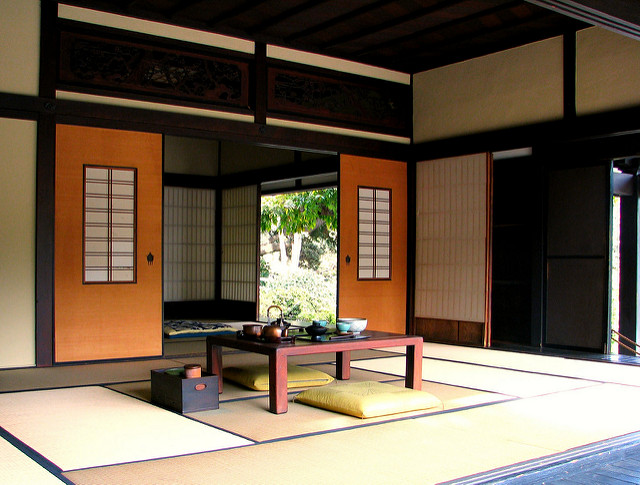A lot of rules regarding indoor manners in Japan are related to footwear. A clear line is traditionally drawn between inside and outside, and outdoor shoes and indoor slippers are handled accordingly. These rules not only apply to most Japanese homes, but also to many traditional ryokan, some restaurants and the indoor sections of many temples, castles and other historic buildings.
 (Source: https://www.flickr.com/photos/tomsaint/3052408416/)
(Source: https://www.flickr.com/photos/tomsaint/3052408416/)
The Genkan
For footwear purposes, the border between inside and outside is not the door itself, but the entrance area, called genkan. Although located indoors, the genkan is still considered outside and is the place for people to take off and put their shoes. In contrast, the indoor space is typically elevated and covered by a different type of flooring than the genkan. Make sure not to step onto the genkan after taking off your shoes. It is considered good manner to turn your shoes to point towards the door after you have removed them.
When visiting a lot of historic buildings, it may be prudent for tourists to wear shoes that can be easily removed as you may be forced to take off and put on your shoes multiple times per day. Furthermore, make sure your socks are neat and free of any holes. During rainy weather, wet umbrellas and raincoats are supposed to be left outside or at the entrance or put into plastic bags to prevent them from dripping water everywhere.
Slipper Etiquette
Slippers are provided by the host. If you are not wearing socks, it is considered polite to bring a fresh pair of socks to wear after removing your outdoor footwear. Slippers can generally be worn anywhere indoors except when entering rooms with tatami floor. Tatami should only be stepped on with socks or in bare feet. Remove your slippers before stepping onto tatami and place them neatly outside the tatami room.
Furthermore, separate toilet slippers are often provided for use inside washrooms. The regular slippers are left outside the door when using the washroom. Don’t forget to remove your toilet slippers after usage, a common faux pas among foreign travellers. See our toilet page for more details about how to use Japanese toilets.
Indoor Photography
The policy on indoor photography at tourist spots differs from place to place. Most temples and shrines prohibit taking pictures inside worship halls. As for museums and historic buildings, the policy differs widely. Some allow photography, but others prohibit flash photography or any type of photography, altogether. Some tourist spots also prohibit the use of tripods and monopods. Look for signs and ask the staff if in doubt.










